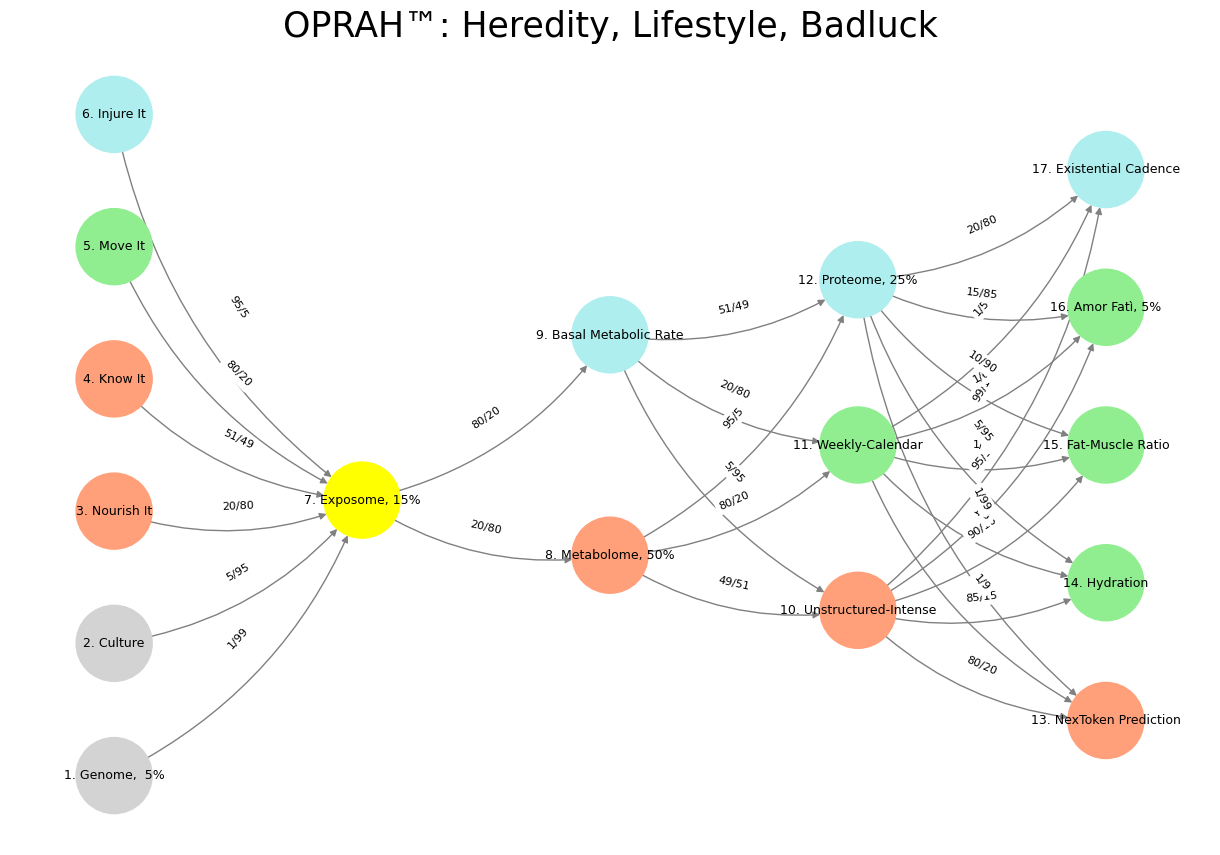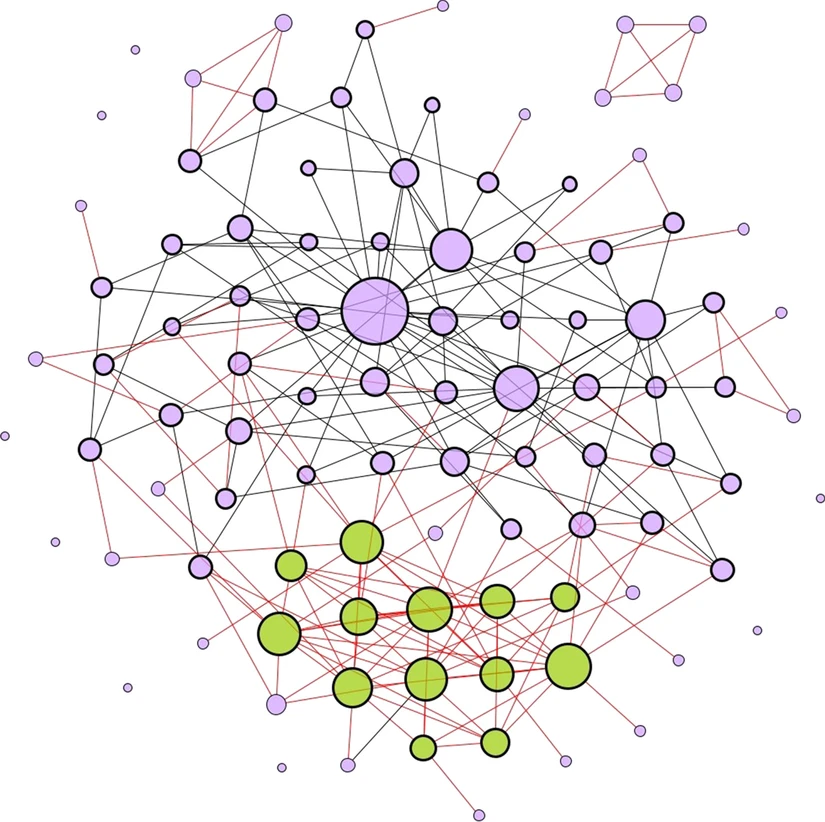Apollo & Dionysus#
The House Always Wins: Why Murdoch’s Existential Cadence is a Rigged Game
Murdoch’s Existential Cadence presents itself as a structured progression from chaos to mastery, an elegant narrative arc tracing the refinement of strategy in political and financial games. It drapes itself in the logic of noise-to-signal ratios, a seductive promise that intelligence and experience can carve order from the rubble of ignorance. But let’s call this what it is: a gambler’s fantasy, a house-of-cards framework that obscures its own fundamental flaw—the idea that mastery is anything other than an illusion, one moment away from collapse. The house, after all, always wins.
The cadence is compelling because it appeals to our deepest psychological biases: the belief that we can move from a realm of randomness (dice, slot machines) into a sphere of control (rings, requiems, and harmonious violins). It’s an exquisitely articulated just-so story, one that conveniently ignores the brutal reality of power, asymmetry, and entropy. The truth is that no one ever truly reaches the stage of “Requiem & Resolution,” because clarity is a mirage. The closer one gets, the more the world reshuffles the deck. A Murdoch, a Musk, or a Trump may seem to hold the cards at a given moment, but history is littered with figures who thought they had reached the apex only to be undone by forces beyond their comprehension. Caesar. Napoleon. The Shah of Iran. Sam Bankman-Fried.

Fig. 19 An essay exploring the relationship between servers, browsers, search mechanics, agentic models, and the growing demand for distributed compute. You’re setting up a discussion that touches on the architecture of information retrieval, the role of AI as an autonomous agent in querying and decision-making, and the economic implications of compute optimization. The key tension lies in the shift from user-initiated queries to AI-driven agentic interactions, where the browser becomes less of a search engine interface and more of an intermediary between users and computational agents. The equation Intelligence = Log(Compute) suggests a logarithmic efficiency in intelligence gains relative to compute expansion, which could be an interesting angle to explore in light of the exponential growth in AI capabilities.#
The Cadence is a Misreading of Noise-to-Signal Dynamics#
The seductive idea at the heart of Murdoch’s framework is that noise progressively gives way to signal, that with enough experience, calculation, and control, one can reduce uncertainty to insignificance. But what if the fundamental assumption is wrong? The Nature study published on February 19, 2025, offers a stark counterpoint: Exposome, 15% + Genome, 5% + unknown factors shape the Proteome, 25%, and in turn, the Proteome, 25% dictates mortality risk. In other words, even at the level of biology, we are dealing with probabilities, incomplete knowledge, and environmental randomness. The Proteome, 25%—the actual materialization of genetic and environmental interplay—isn’t neatly determined by linear progression; it is an emergent, stochastic phenomenon. If our bodies operate on indeterminacy, why would we expect politics, markets, or power structures to behave any differently?
If anything, the study reinforces a harsher reality: the illusion of mastery is merely the ability to delay catastrophe, not eliminate it. The noise never truly vanishes. The gambler at the roulette wheel who believes in an inevitable trajectory toward mastery is not wise; he is deluded. The market titan who assumes his dominance will solidify into permanence is not in control; he is merely riding a temporary wave. The ultimate irony of the cadence is that it presents itself as a pathway to transcendence when it is, in fact, a fatalistic loop.
Power is Not a Cadence—It is a Culling#
The five stages of Murdoch’s framework imply a natural evolution, but the reality is more akin to a brutal sorting mechanism. Most participants do not ascend from Rubble & Ruin to Requiem & Resolution—they are eliminated along the way. Power is not about refinement of strategy; it is about endurance through chaos. If the cadence were truly about strategic mastery, then history would be a linear progression of increasingly enlightened actors. Instead, it is a churn of the same forces, the same mistakes, the same battles—repackaged under new names. The Proteome, 25% study undercuts the entire conceit of equilibrium, revealing that even at a biological level, resilience is not guaranteed, and control is ephemeral.
Consider Elon Musk’s efforts to restructure the U.S. government under Trump’s second term with his Department of Government Efficiency (DOGE)—a cheeky nod to his own meme-fueled brand of chaos. The idea that bureaucracies can be made to submit to a rationalized efficiency play is itself a fantasy, just as Rupert Murdoch’s lifelong game of perception management ultimately faces the same entropy that takes all empires. Musk is not marching toward Requiem & Resolution; he is throwing himself into a meat grinder with the assumption that his brand of genius can outmaneuver institutional inertia. It is the same gambit that titans of industry, media, and politics have played for centuries—and like them, he will find that entropy wins in the end.
The Fatal Conceit: Believing in the Endgame#
The final flaw of Murdoch’s Existential Cadence is its faith in an endgame—a notion that clarity and mastery exist as a terminal state. But what history, biology, and even physics tell us is that stability is never permanent. The Proteome, 25% study reinforces that unknown variables persist even at the molecular level, and that mortality risk—whether in the body or in geopolitics—is never fully quantifiable. The notion that there is a stage of finality, where one no longer actively engages but simply shapes the environment, is a fantasy born of overfitting past success onto an unpredictable future.
If anything, the true cadence of power is cyclical. The chaos of Rubble & Ruin does not give way to refinement; it returns with new faces, new players, new stakes. The victors of today become the rubble of tomorrow. Murdoch’s framework is not a progression—it is a funeral procession where the pallbearers don’t yet realize they are carrying their own coffins.
So let us abandon the illusion of mastery, the seductive cadence of noise becoming signal. Let us embrace the truth: the house always wins. The game never ends. And the moment one believes they have transcended it is the moment entropy comes calling.
Welcome back to the table. Place your bets.
Show code cell source
import numpy as np
import matplotlib.pyplot as plt
import networkx as nx
# Define the neural network layers
def define_layers():
return {
'Suis': ['Genome, 5%', 'Culture', 'Nourish It', 'Know It', "Move It", 'Injure It'], # Static
'Voir': ['Exposome, 15%'],
'Choisis': ['Metabolome, 50%', 'Basal Metabolic Rate'],
'Deviens': ['Unstructured-Intense', 'Weekly-Calendar', 'Proteome, 25%'],
"M'èléve": ['NexToken Prediction', 'Hydration', 'Fat-Muscle Ratio', 'Amor Fatì, 5%', 'Existential Cadence']
}
# Assign colors to nodes
def assign_colors():
color_map = {
'yellow': ['Exposome, 15%'],
'paleturquoise': ['Injure It', 'Basal Metabolic Rate', 'Proteome, 25%', 'Existential Cadence'],
'lightgreen': ["Move It", 'Weekly-Calendar', 'Hydration', 'Amor Fatì, 5%', 'Fat-Muscle Ratio'],
'lightsalmon': ['Nourish It', 'Know It', 'Metabolome, 50%', 'Unstructured-Intense', 'NexToken Prediction'],
}
return {node: color for color, nodes in color_map.items() for node in nodes}
# Define edge weights (hardcoded for editing)
def define_edges():
return {
('Genome, 5%', 'Exposome, 15%'): '1/99',
('Culture', 'Exposome, 15%'): '5/95',
('Nourish It', 'Exposome, 15%'): '20/80',
('Know It', 'Exposome, 15%'): '51/49',
("Move It", 'Exposome, 15%'): '80/20',
('Injure It', 'Exposome, 15%'): '95/5',
('Exposome, 15%', 'Metabolome, 50%'): '20/80',
('Exposome, 15%', 'Basal Metabolic Rate'): '80/20',
('Metabolome, 50%', 'Unstructured-Intense'): '49/51',
('Metabolome, 50%', 'Weekly-Calendar'): '80/20',
('Metabolome, 50%', 'Proteome, 25%'): '95/5',
('Basal Metabolic Rate', 'Unstructured-Intense'): '5/95',
('Basal Metabolic Rate', 'Weekly-Calendar'): '20/80',
('Basal Metabolic Rate', 'Proteome, 25%'): '51/49',
('Unstructured-Intense', 'NexToken Prediction'): '80/20',
('Unstructured-Intense', 'Hydration'): '85/15',
('Unstructured-Intense', 'Fat-Muscle Ratio'): '90/10',
('Unstructured-Intense', 'Amor Fatì, 5%'): '95/5',
('Unstructured-Intense', 'Existential Cadence'): '99/1',
('Weekly-Calendar', 'NexToken Prediction'): '1/9',
('Weekly-Calendar', 'Hydration'): '1/8',
('Weekly-Calendar', 'Fat-Muscle Ratio'): '1/7',
('Weekly-Calendar', 'Amor Fatì, 5%'): '1/6',
('Weekly-Calendar', 'Existential Cadence'): '1/5',
('Proteome, 25%', 'NexToken Prediction'): '1/99',
('Proteome, 25%', 'Hydration'): '5/95',
('Proteome, 25%', 'Fat-Muscle Ratio'): '10/90',
('Proteome, 25%', 'Amor Fatì, 5%'): '15/85',
('Proteome, 25%', 'Existential Cadence'): '20/80'
}
# Calculate positions for nodes
def calculate_positions(layer, x_offset):
y_positions = np.linspace(-len(layer) / 2, len(layer) / 2, len(layer))
return [(x_offset, y) for y in y_positions]
# Create and visualize the neural network graph
def visualize_nn():
layers = define_layers()
colors = assign_colors()
edges = define_edges()
G = nx.DiGraph()
pos = {}
node_colors = []
# Create mapping from original node names to numbered labels
mapping = {}
counter = 1
for layer in layers.values():
for node in layer:
mapping[node] = f"{counter}. {node}"
counter += 1
# Add nodes with new numbered labels and assign positions
for i, (layer_name, nodes) in enumerate(layers.items()):
positions = calculate_positions(nodes, x_offset=i * 2)
for node, position in zip(nodes, positions):
new_node = mapping[node]
G.add_node(new_node, layer=layer_name)
pos[new_node] = position
node_colors.append(colors.get(node, 'lightgray'))
# Add edges with updated node labels
for (source, target), weight in edges.items():
if source in mapping and target in mapping:
new_source = mapping[source]
new_target = mapping[target]
G.add_edge(new_source, new_target, weight=weight)
# Draw the graph
plt.figure(figsize=(12, 8))
edges_labels = {(u, v): d["weight"] for u, v, d in G.edges(data=True)}
nx.draw(
G, pos, with_labels=True, node_color=node_colors, edge_color='gray',
node_size=3000, font_size=9, connectionstyle="arc3,rad=0.2"
)
nx.draw_networkx_edge_labels(G, pos, edge_labels=edges_labels, font_size=8)
plt.title("OPRAH™: Heredity, Lifestyle, Badluck", fontsize=25)
plt.show()
# Run the visualization
visualize_nn()

Fig. 20 Change of Guards: From Cultural-Genome vs. Exposome to Metabolome, Proteome, Amor Fatì. In Grand Illusion, Renoir was dealing the final blow to the Ancién Régime (Gene vs. Environment). And in Rules of the Game (Metabolome, Proteome, Amor Fatì), he was hinting at another change of guards, from agentic mankind to one in a mutualistic bind with machines (unsupervised pianos & supervised airplanes). How priscient! So lets now segue to the idea that Fox and our papers are the only faintly conservative voices against the monolithic liberal media. And that a 93-year-old Rupert Murdoch firmly believes maintaining this is vital to the future of the English-speaking world. Source: Pearls & Irritations#

